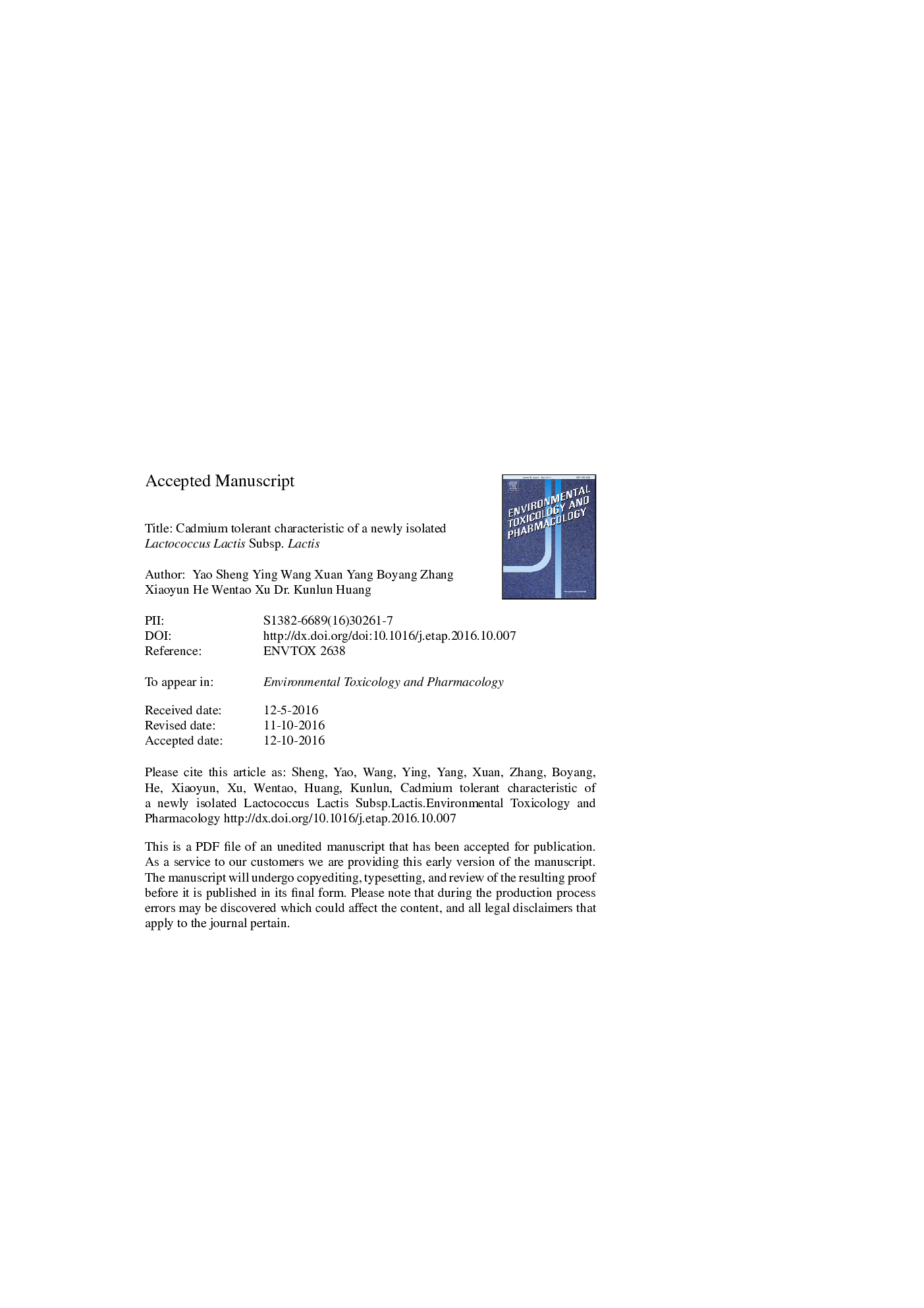| Article ID | Journal | Published Year | Pages | File Type |
|---|---|---|---|---|
| 5559910 | Environmental Toxicology and Pharmacology | 2016 | 23 Pages |
Abstract
Environmental contamination caused by heavy metals poses a major threat to the wildlife and human health for their toxicity and intrinsically persistent nature. Some specific food grade bacteria have properties that enable them to eliminate heavy metals from food and water. Lactococcus lactis subsp. lactis, newly isolated from pickles, is a cadmium (Cd) tolerant bacteria. Cd resistant properties of the lactis was evaluated under different Cd stresses. Cd accumulation in different cellular parts was determined by ICP-MS and cell morphology changes were measured by SEM-EDS and TEM-EDS. In addition, functional groups associated with Cd resistance were detected by infrared spectroscopic analysis. The results indicated that Cd mainly accumulated in the cell surface structures including cytoderm and cytomembrane. Functional groups such as OH and NH2 in the cell surface played essential roles in Cd biosorption. The elements of O, P, S, and N of polysaccharide, membrane protein and phosphatidate in the cell surface structures might be responsible for Cd biosorption for their strong electronegativity. This study indicated that ultrastructural analysis can be a supplemental method to study heavy metal resistance mechanism of microorganism and the newly isolated lactococcus lactis subsp. lactis has great potential to be applied to decontamination of heavy metals.
Related Topics
Life Sciences
Environmental Science
Health, Toxicology and Mutagenesis
Authors
Yao Sheng, Ying Wang, Xuan Yang, Boyang Zhang, Xiaoyun He, Wentao Xu, Dr. Huang,
